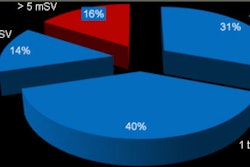Monday, November 28 | 10:40 a.m.-10:50 a.m. | SSC06-02 | Room E353B
Endorectal MRI can serve as a predictive biomarker for biochemical relapse in patients undergoing combination brachytherapy and intensity-modulated radiation therapy (IMRT), according to a new study by researchers at Memorial Sloan-Kettering Cancer Center.The results further support endorectal MRI as the imaging modality of choice for evaluating prostate cancer.
"High spatial resolution provides high soft-tissue contrast, producing excellent-quality images with detailed depiction of the anatomy of the prostate gland and surrounding structures," noted presenter Dr. Asim Afaq from the department of radiology. "Although widely used in localization, staging, and follow-up, endorectal MRI is being increasingly studied to assess potential prognostic roles in the management of prostate cancer."
The study enrolled 273 men with intermediate- or high-risk prostate cancer who underwent 1.5-tesla endorectal MRI of the prostate before combination radiotherapy. Median follow-up was 39 months, ranging from 12 to 123 months. The five-year biochemical relapse-free survival rate was 92%.
Of the 18 patients with biochemical recurrence, nine had scores of extracapsular extension (ECE) as measured on MRI of 4 or 5 (50%), five had an ECE score of 3 (28%), and four had ECE scores of 1 or 2 (22%). Of the 255 patients without relapse, 58 had ECE scores of 4 or 5 (23%), 73 had a score of 3 (29%), and 124 had scores of 1 or 2 (48%). Of the 78 patients with an ECE score of 3, only five (6%) relapsed.
For patients with intermediate- or high-risk prostate cancer undergoing combination brachytherapy and intensity-modulated radiotherapy, the presence of extracapsular extension can predict biochemical relapse, Afaq and colleagues concluded.
Afaq added that the study is of particular clinical importance given the increasing use of combination radiotherapy for patients with intermediate- and high-risk prostate cancer.
"Management and follow-up of these patients could be adjusted based on this risk stratification with an aim to improve recurrence-free survival in the future," he said.



.fFmgij6Hin.png?auto=compress%2Cformat&fit=crop&h=100&q=70&w=100)




.fFmgij6Hin.png?auto=compress%2Cformat&fit=crop&h=167&q=70&w=250)











